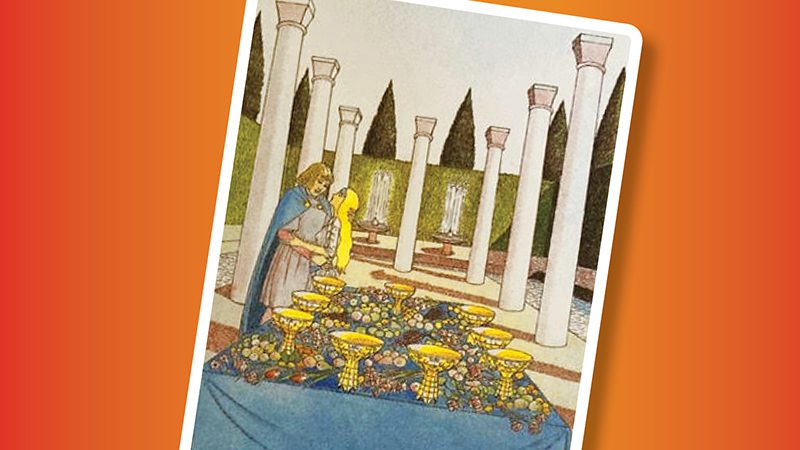

When I first encountered the Tarot back in the 1970s there were very few decks to choose from. Nevertheless I found the enigmatic images on the 22 Major Trumps quite easy to relate to as each picture had the sense of a story behind it. The notion of the Tarot Fool as an image of Everyman taking an archetypal journey through life made sense. Jung’s motif of the first part of life being lived on the outside through experience of parents, teachers, love, conflicts and the stuff of external life, while the second half of life, often following some sort of mid-life crisis, resulting in the need for reflection on the inner world, ultimately leading to individuation, resonated with me.
However, the Minor Arcana presented more of a challenge. I had two decks, one being the Marseille deck with only the number of the emblems on each suit card (Ace to Ten of Cups, Rods, Swords and Coins) to work with which made it more difficult to remember. It meant learning what for example 8 cups meant without a visual prompt. The Rider-Waite deck was easier because of the pictorial images on all the Minor Arcana, but I still could not read an actual story into the whole suit and while I could learn the meanings of each card by heart I wanted something more imaginative to work with.
After much discussion, using motifs from myth, astrology and Jungian psychology, Liz Greene and I created The Mythic Tarot which uses myths as a way of interpreting the various archetypal stages of life and experiences contained in the cards.
We decided a single myth to amplify the meaning for each of the Major Arcana and the Court Cards was appropriate, while the four suits of the Minor Arcana worked better if a single myth could be broken down to complement the meanings, numbers and elements of each suit. We chose Greek myths, which contain so many archetypal aspects of human experience, to unfold through the suits to reveal familiar life situations which everyone can relate to, and which remain as true and relevant in modern life as they were in ancient times.
In this way, the deeper meaning of the cards can be tapped into imaginatively for active imagination and self-awareness as well as for divination.
The mythic aspect shows the way stories can bring relief and a path to resolution from internal conflicts. One of the healing functions of myth and story is to let us know we are not alone with our hopes and fears, and our conflicting feelings of love and hate. Myths tell us familiar tales as old as time involving parental conflicts, sibling rivalries, successes and failures. They also remind us that beauty, talent, power and wealth bring their own problems, and that from the depths of despair we can still find hope. This course is designed to explore myths of the Minor Arcana both to enrich Tarot readings and as vehicles for self-awareness.
Examine the minor arcana of the Mythic Tarot Deck and the Sharman-Caselli Deck with Juliet Sharman-Burke in her course here at Jung Platform – Myths of the Minor Arcana.
In the course Myths of the Tarot Court Cards, Juliet invites us into the world of the Tarot Court Cards. She will explore myths, astrology, and the psychological depth in these cards.Learn more Here.
FREE TAROT READING: Join Juliet and other Jung Platform friends at a live tarot reading on September 24! Several lucky participants will be chosen for a free five-card reading. Sign up Here.
